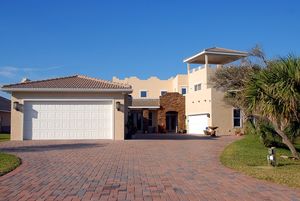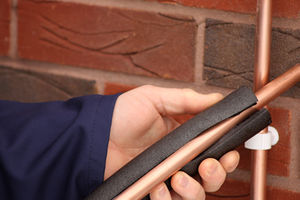There are lots of reasons a client might want to renovate: increased living space, a functional floorplan or upgraded design choices. But, today’s homeowners also want improvements that will make their homes energy efficient and eco-friendly. The primary motivation is to keep their energy bills from spiraling out of control.
As a builder or contractor, it’s good to know that transforming your client’s buildings into energy-efficient units can make their properties much more valuable. These are a few practical solutions to help your client create such a property with energy efficient renovations.
Install Cool Roofs

In particularly warm climates, a practical way to make a house more energy efficient is by installing a cool roof. A cool roof is made of roofing materials that have high solar reflectance and thermal emittance properties, which means they can reflect the sun’s ultraviolet and infrared wavelengths and radiate any absorbed energy.
Cool roofs can decrease energy bills by decreasing the amount of heat transferred to the house below it. With less heat coming in from above, the cooling system uses less energy to create a comfortable temperature throughout the home.
Cool roofs also minimize the urban heat island effect and help to prolong a roof's life, because the ultraviolet light from the sun can cause a roof to deteriorate. Cool roofing designs can include reflective paint, sheet coverings, as well as certain highly reflective shingle and tile models, which are usually lighter in color.
It is worth noting that the amount of energy that a cool roof saves depends on numerous variables, such as: the prevailing climate, the existing insulation, the efficiency of the air-conditioning system, and the type of roof.
Add insulation
 Another way to make your client’s property energy efficient is by properly insulating it. This will increase comfort and significantly reduce their heating and cooling bills. Properties that have leaks or that conduct heat well tend to generate high energy bills. This is because they seep in hot air during the summers and cold air during the winters, making the HVAC system work harder to maintain the desired temperature.
Another way to make your client’s property energy efficient is by properly insulating it. This will increase comfort and significantly reduce their heating and cooling bills. Properties that have leaks or that conduct heat well tend to generate high energy bills. This is because they seep in hot air during the summers and cold air during the winters, making the HVAC system work harder to maintain the desired temperature.
With proper insulation, however, you can alleviate all that. Besides walls, floors and ceilings, it’s important to insulate hot and cold water piping where appropriate. While code might not require it in all regions of the country, flexible foam pipe insulation like AP Armaflex ® can save the homeowner money by preventing heat (energy) loss, controlling condensation build up on cold water lines or preventing pipes from freezing and bursting in cold climates. When heat trace cables are used on piping, it is recommended to increase the Armaflex tube up to the next ID size for a proper fit.
When selecting an insulation option, consider the R-value. It is a measure of the material’s resistance to heat transfer. Insulations that offer excellent heat transfer resistance have higher R-value numbers.
Submitted by: Costello Property Management in Las Vegas, a full service real estate company.
